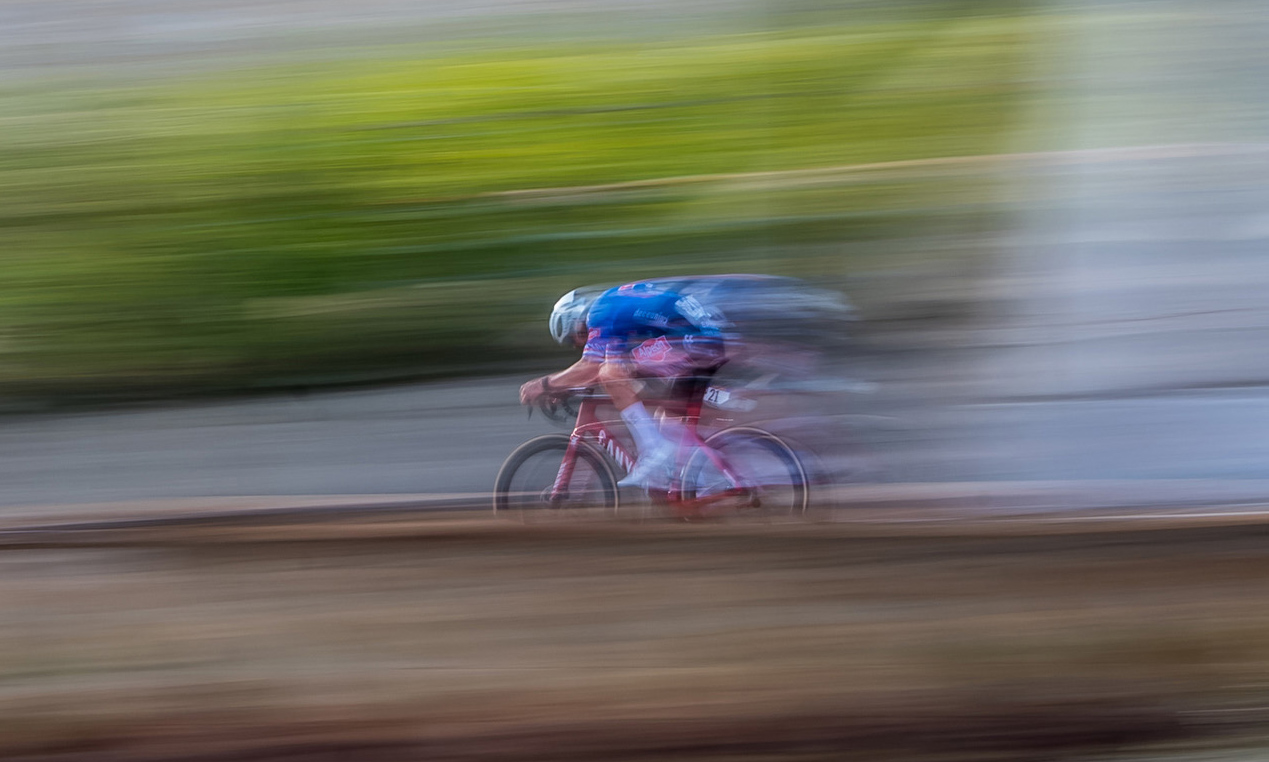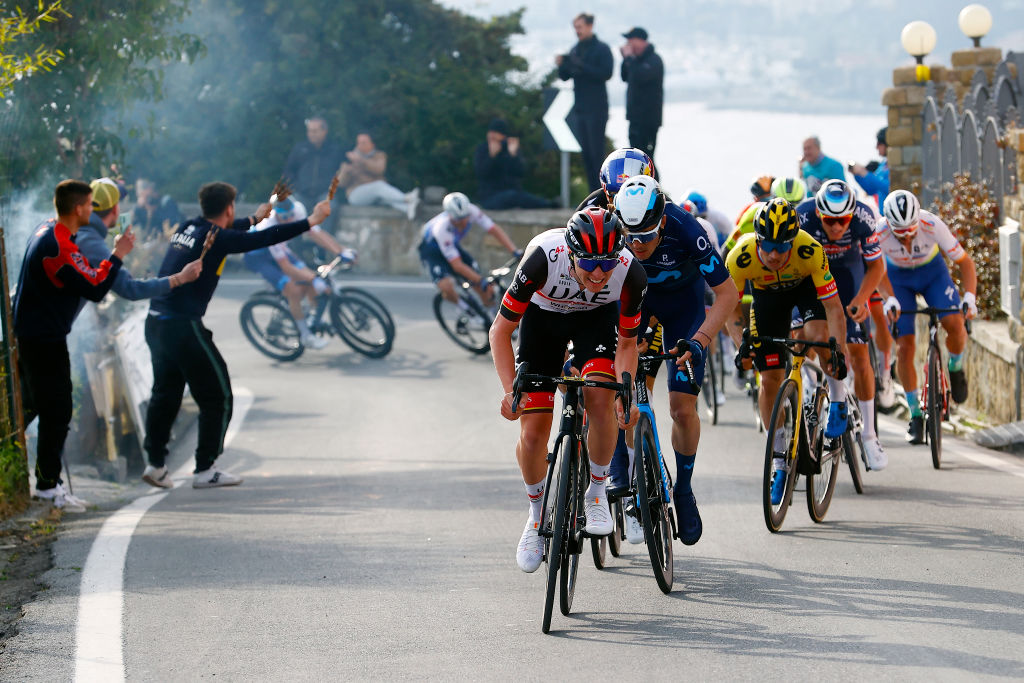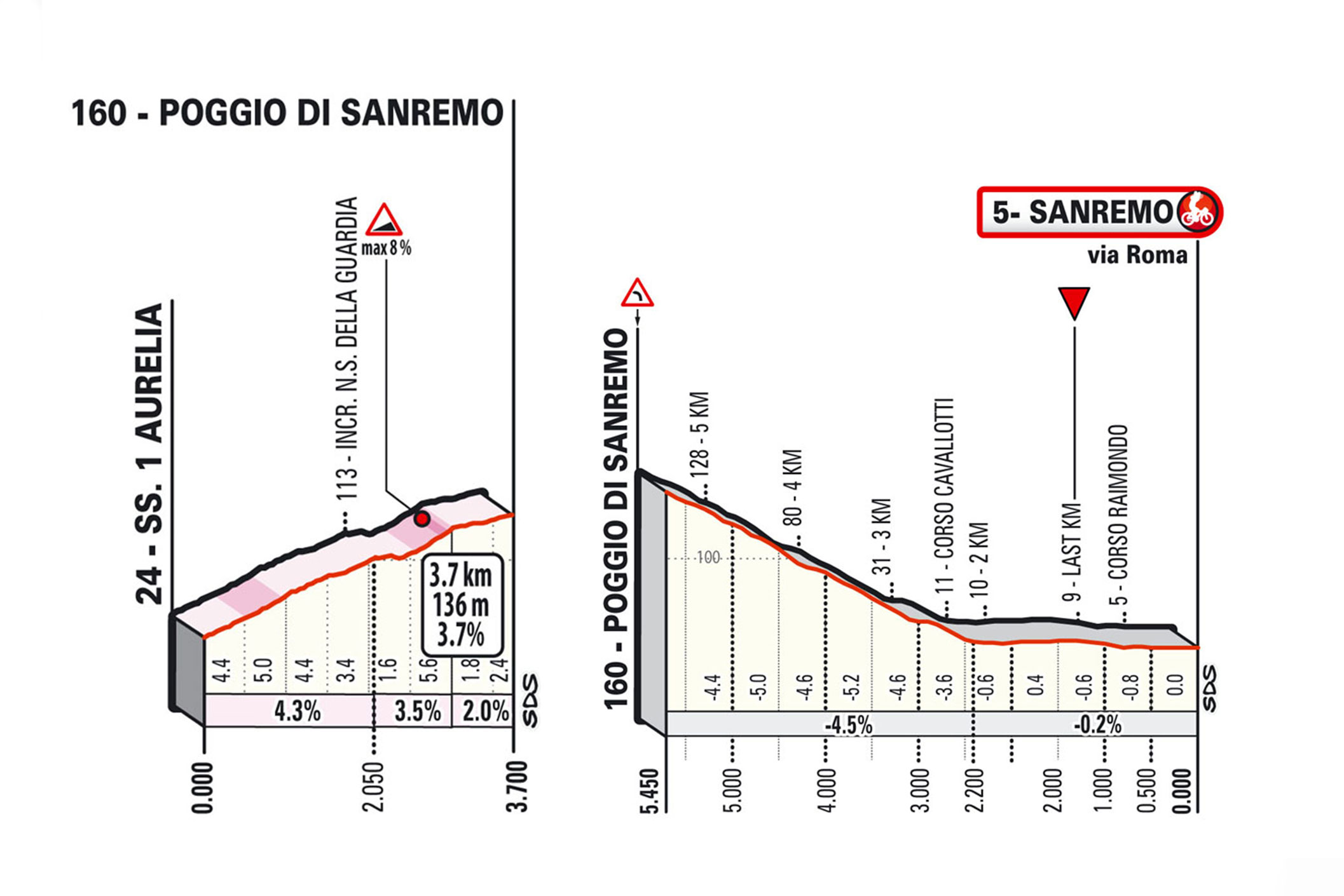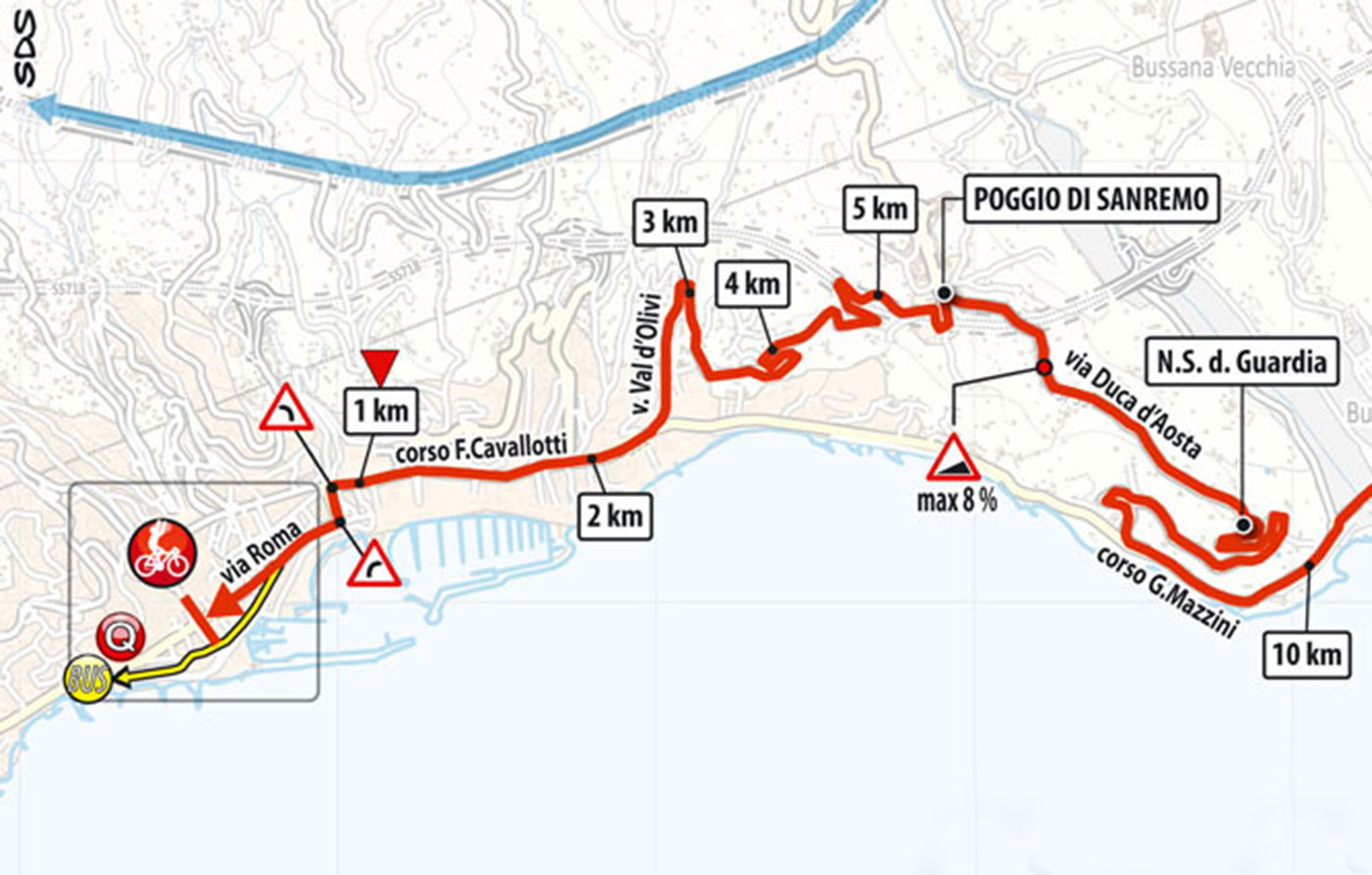What is the Poggio? Inside the decisive climb of Milan-San Remo
All you need to know about the pivotal hill of the 300km Monument marathon

Of the five Monumental Classics of cycling, every race has its iconic points, whether they're climbs, cobbled sectors or famed historical locations.
Paris-Roubaix has the brutal Trouée d'Arenberg, the Tour of Flanders has the punishing Koppenberg, and so on. The first Monument of the season, Milan-San Remo, doesn't offer up anything quite as fearsome as those challenges, but it does have one icon.
Nestled at the end of a 300km marathon of a ride in the men's race, the Poggio di San Remo is the decisive spot on the Milan-San Remo route for both men and women and the most famous part of the longest race on the calendar.
Measuring in at 4km and an average gradient of a mere 3.6%, the hill lying to the east of San Remo isn't exactly a scary prospect, even for a Sunday club run. But on San Remo Saturday, at almost 40kph after up to seven hours in the saddle? It's a very different story.
In a race where, frankly, little can happen for hours on end, the Poggio is the must-watch moment of the day – its importance to the outcome of Milan-San Remo standing above and beyond similar decisive moments of other races.
The Poggio takes on outsized importance given that it is, after all, only a short stretch of road – just 3.7km in total – in the longest one-day race on the calendar. The battle for position leading up to the right-hand turn off the Corso Giuseppe Mazzini, and the blistering pace set on the way up, is testament to that.
And while the race has been run since 1907, it was only in 1960 that the Poggio was added, thanks to Vincenzo Torriani, the man who put the Muro di Sormano on the Il Lombardia map and who organised the Giro d'Italia from 1946 to the early 1990s. Milan-San Remo literally wouldn't be the same without the legendary race boss.
The latest race content, interviews, features, reviews and expert buying guides, direct to your inbox!
At the 2022 edition of the race, Matej Mohorič demonstrated the importance of Torriani's legacy with a devastating, dropper post-aided solo attack on the way down, having been among the select lead group over the top.
In 2023, Mathieu van der Poel made his blistering solo attack on the Poggio, with a textbook tactical timing that paved the way for his race victory.
In so doing, he took the fastest time on the climb in race history, completing it in 5:40. As is the trend in pro cycling right now, the record didn't stand long as the 2024 edition rolled over the climb substantially quicker and Strava currently lists Filippo Ganna as having the fastest ascent with a time of 5:31. That speed didn't count for much, though, as the 2024 edition ended in a sprint won by Jasper Philipsen.
The women's QoM belongs to Ilaria Sanguineti of Lidl-Trek, but that should all change after the first Milan-San Remo Women.

Back in 2020, in the pandemic-delayed edition, the all-star pairing of Wout van Aert and Julian Alaphilippe sprinted for the line on the Via Roma after escaping over the top. In 2018, Vincenzo Nibali soloed to the win after attacking midway up the hill, a rare feat in the modern race even if the mass sprint finishes of years gone by now seem consigned to history.
Sure, the more versatile sprinters can make it over the top in a good position – names like Michael Matthews, Caleb Ewan, and Peter Sagan were often part of the lead group at the finish. But more often than not the race, and the attacking, is made by the puncheurs.
The race can be, and often is, lost on the way up the climb, but the road down the other side is also vital. From the top, there's 5.5km of racing between the riders and victory, and with more than half of that taken up by the downhill, it's no surprise that blitzing the descent is key to success.
Speeds reaching in excess of 70 or even 80kph are common on a road where camera motorbikes often battle to keep up in the chaos. It's no surprise that Nibali's winning ride is up there in the Strava rankings; the Italian lies second overall at an average speed of 56.4kph and a time of 3:12. Simon Clarke, who finished 38th in 2021, holds the record, though, a second quicker. Mohorič's famous ride, meanwhile, clocked in at 3:30.
The Poggio: it's just 3,700 metres long with 136 metres of elevation, but relatively speaking it's perhaps the most influential climb on the calendar.



Dani Ostanek is Senior News Writer at Cyclingnews, having joined in 2017 as a freelance contributor, later being hired full-time. Her favourite races include Strade Bianche, the Tour de France Femmes, Paris-Roubaix, and Tro-Bro Léon.
You must confirm your public display name before commenting
Please logout and then login again, you will then be prompted to enter your display name.